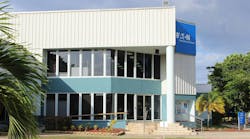Production and development of fuel cells continue to increase as manufacturers anticipate future demands.
Fuel cells are a hot commodity-or at least a promising one. The possibilities of this alternative-energy technology are firing the imaginations of Wall Street investors and home power-generation enthusiasts. The New York Times even called fuel cells "The Great Green Hope" in a recent article.
Fuel-cell company stocks spiked dramatically during the last six months, with some manufacturers reporting fivefold increases in stock value. Manufacturers are poised to mass-produce fuel cells, which would lower the price of the technology and open up the market for residential and commercial applications. Meanwhile, the Department of Energy (DOE) has requested more than $100 million for fuel cell R&D and production in the 2001 budget.
Currently, banks and other computer-dependent information companies show the most interest in fuel cells. That's because the technology provides a high-degree of uninterrupted power. Today's fuel cells offer up to 99.999% reliability. Power-quality professionals call that "five nines," which translates roughly into only three seconds of power downtime per year. Compare that to the average of 53 minutes a year of downtime in the United States, and you can see the potential fuel cells have to save large banks millions of dollars per year. An hour of downtime a year can cost a large bank millions.
Last year, First National Bank of Omaha (FNBO), the seventh-largest credit card processor in the country with 6.5 million customers, selected fuel cells to power a computer system in a 200,000-sq-ft data center. The fuel cells produce 400kW of electric power. First National is also gaining an added bonus from the fuel cells. Because between 70% and 80% of the heat generated by the cells is recoverable, the fuel cells produce enough heat to keep the building warm and melt snow on walkways outside the facility using coils built into the sidewalks.
Though the potential of fuel cells is enormous and may one day provide distributors' contractor customers with new business in installations, the technology has yet to go mainstream through mass-production. "We haven't installed any fuel cells yet-and we don't know any contractors that have," says Bill Gralike, director of field resources for Guarantee Electrical Co., St. Louis, Mo. Gralike says one prospective client found the technology too cost prohibitive.
"We ended up specifying traditional UPS systems, though I thought fuel cells looked like a great technology for facilities that need absolute reliability."
Rob Colgan, director of marketing, National Electrical Contractors Association (NECA), Bethesda, Md., sees the fuel-cell phenomenon as a coming thing. "Fuel cell manufacturers envision units about the size of a refrigerator powering homes and businesses. That could be a an enormous market for contractors."
Fuel cell manufacturers continue to expand their manufacturing facilities in anticipation of future demand. Plug Power Inc., Latham, N.Y., recently opened a new 50,000-sq-ft manufacturing facility adjacent to its existing R&D labs. In mid-February, the company announced that it had run a hydrogen-powered fuel cell for more than 10,000 hours-a significant milestone. One of its competitors, FuelCell Energy, Inc., Danbury, Conn., has announced plans to build a 250kW fuel-cell power plant this year at a Mercedes-Benz production facility in Tuscaloosa, Ala., that will manufacture cars powered by fuel cells.
Other applications are equally intriguing. The New York Power Authority (NYPA) installed fuel cells in several cogeneration projects that feed off of leftover heat and gases from the power generation process. A 200kW fuel cell at a NYPA wastewater treatment plant in Yonkers, N.Y., is the first fuel cell in the Western Hemisphere to run on a gas produced in the sewage-treatment process. By processing the gas, the fuel cell yields hydrogen, which reacts with oxygen to produce electricity and hot water. In addition, the Power Authority has installed a 200kW fuel cell powered by natural gas at a New York police station, and has a similar project at a hospital. As the cost of fuel cells drop and more applications hit the mainstream, distributors can expect more interest in this technology.








